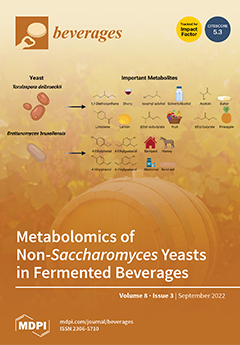Preservation technologies for winemaking have relied mainly on the addition of sulfur dioxide (SO
2), in consequence of the large spectrum of action of this compound, linked to the control of undesirable microorganisms and the prevention of oxidative phenomena. However, its potential
[...] Read more.
Preservation technologies for winemaking have relied mainly on the addition of sulfur dioxide (SO
2), in consequence of the large spectrum of action of this compound, linked to the control of undesirable microorganisms and the prevention of oxidative phenomena. However, its potential negative effects on consumer health have addressed the interest of the international research on alternative treatments to substitute or minimize the SO
2 content in grape must and wine. This review is aimed at analyzing chemical methods, both traditional and innovative, useful for the microbiological stabilization of wine. After a preliminary description of the antimicrobial and technological properties of SO
2, the additive traditionally used during wine production, the effects of the addition (in must and wine) of other compounds officially permitted in winemaking, such as sorbic acid, dimethyl dicarbonate (DMDC), lysozyme and chitosan, are discussed and evaluated. Furthermore, other substances showing antimicrobial properties, for which the use for wine microbiological stabilization is not yet permitted in EU, are investigated. Even if these treatments exhibit a good efficacy, a single compound able to completely replace SO
2 is not currently available, but a combination of different procedures might be useful to reduce the sulfite content in wine. Among the strategies proposed, particular interest is directed towards the use of insect-based chitosan as a reliable alternative to SO
2, mainly due to its low environmental impact. The production of wines containing low sulfite levels by using pro-environmental practices can meet both the consumers’ expectations, who are even more interested in the healthy traits of foods, and wine-producers’ needs, who are interested in the use of sustainable practices to promote the profile of their brand.
Full article





